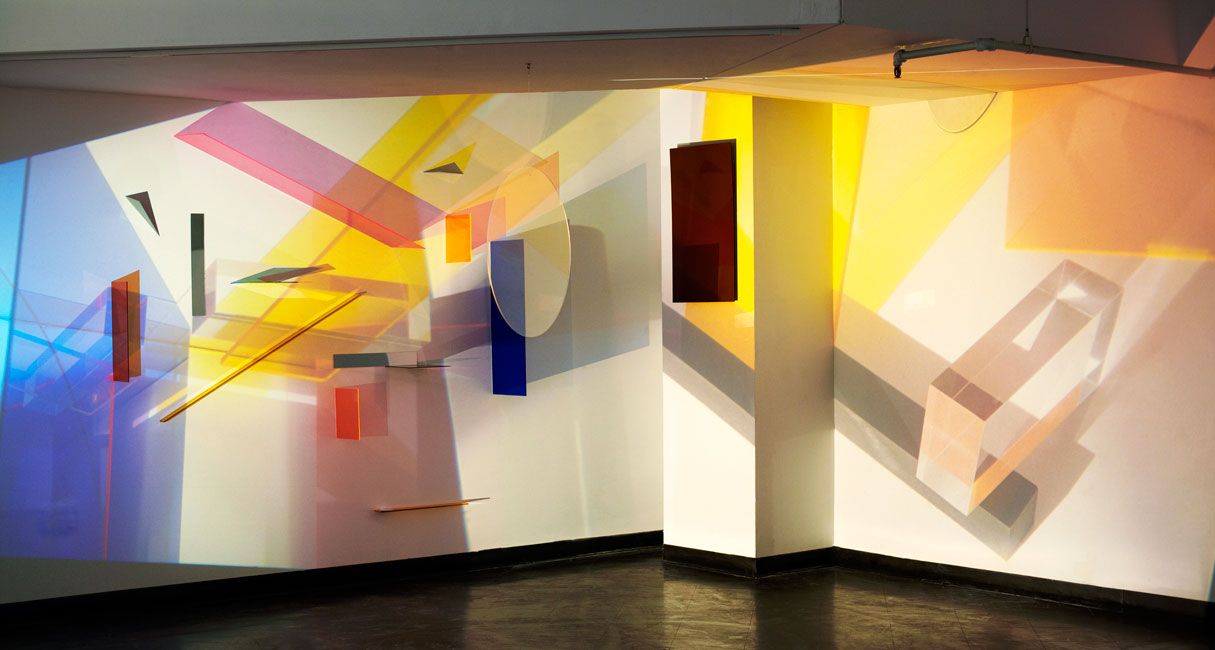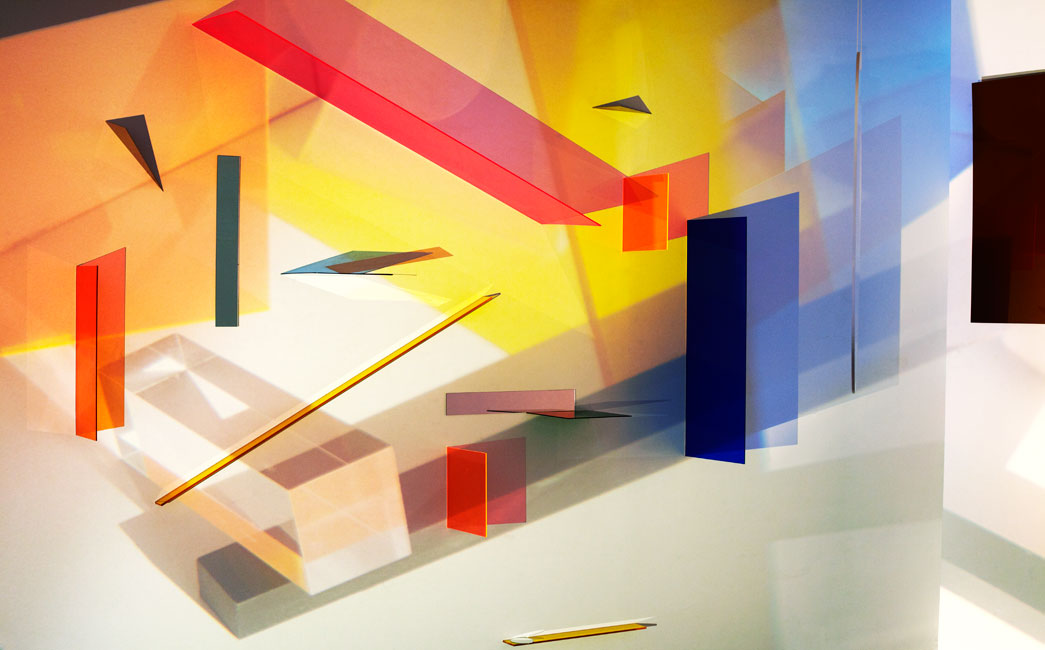These wonderfully vibrant creations by Bahar Yurukoglu , titled Plexiberg, and Waterfall are actually video projections combined with reflective plexiglass to produce a juicy rectilinear display of color. It’s wonderfully abstract but also digestible, using fundamental building blocks such as color and light to generate a new perspective. They are accompanied by the sound of icebergs melting, and footsteps in the snow respectively and are two of three site-specific installations.
The exhibition titled Flow Through (2016) at Arter, Istanbul curated by Duygu Demir includes much more with Pingo that has 3 video monitors embedded into an MDF floor playing techno music, a series of photographs, a set of lightboxes, and even the temperature of the entire space being continuously controlled at 57 degrees.
It was inspired by the artist’s visits to Svalbard, a Norwegian archipelago in the Arctic Circle, throughout 2015 where she experienced both continuous sunlight, and constant darkness. She seeks to create fictional spaces that employ elements of nature. The plexiglass installations resemble shards of loose ice while Pingo is a nowhere space yet familiar with its medley of bird sounds and techno playing in the distance as though from a car that’s lost and halted. It sits upon a heightened floor elevation forcing the viewer to consider a different view of their surroundings.
The photographs are anything but static images, they’re made dynamic by a veil of filters that reflect, separate, collapse, and expand the frame, resulting in a transcendental experience. Svalbard presented an ideal political space to the artist not only in its frozen isolation but in the fact that it is an international territory unmarked by borders. Wondering how to translate this space to an audience far away, Bahar uses distortions of natural phenomena in her images to create a disorienting effect of time and space, something she intensely experienced in her stay there.
The exhibition culminates in a video with a non-linear narrative, Navigator where we see the trope of a female traveler, wandering through different landscapes from pure naturalistic all the way through to the abandoned Soviet-era mining town Pyramiden. Bahar says of the figure, “The female figure in gold walking through the landscape represents a post-apocalyptic fantasy I have deep inside of me. She is communicating as a form of survival and immortality; at once to be saved, and also not to be forgotten. [She] is, in essence, devising a new mythology as she travels through frozen, borderless, timeless space.”
Her fictive worlds straddle the natural and artificial in a way that it is neither that nor this but curiously in between. It provokes feelings of ambivalence in us as belonging here and there simultaneously while somehow feeling totally unfamiliar. The goal is to create a sense of otherworldliness through an inquiry into binaries of absence/presence, natural/industrialized, abandoned towns/advanced towns, utopia/dystopia, future/past.
With Flow Through, Bahar questions the boundary between the real and the illusive. From conveying the specter of communism at Pyramiden to the immense landscape of Svalbard itself, she presents a slice of freedom, and the imaginative impulse to dream of a new world.









